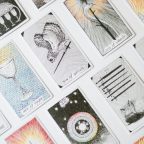
Excelling in the PAT: Unlocking Success with Past Papers
Benefits of Using PAT Past Papers
One big win with PAT past papers is getting cozy with the format. PAT papers have a specific structure and style, and by practicing with them, you become familiar with the layout, types of questions, and instructions. It’s like having the blueprint to the maze before you enter it—no surprises!
For more information on PAT past papers, visit here
By building this grounded preparation regime, you craft a snug mental toolkit ready for any curveballs the actual test might throw.
Pattern Recognition
Practicing with past questions trains your brain to recognize patterns. By repeatedly encountering similar question types, you form a mental library of strategies and shortcuts. On test day, this muscle memory kicks in, allowing you to tackle questions more instinctively and efficiently.
These papers are not just a random selection but purposefully designed to test certain concepts and problem-solving skills.
Practicing helps you discern what’s at the heart of each question—what are the examiners really asking? This insight is invaluable because it guides you in crafting the most succinct and relevant answers.
Application of Theoretical Knowledge
Physics is often about applying abstract concepts to concrete scenarios. Past papers bridge the gap between theory and practice by challenging you to wield what you’ve learned to solve problems in new contexts, reinforcing and strongly deepening your understanding.
Time Management Skills
With the clock ticking, honing your ability to manage time is crucial. Pat past papers let you practice pacing: figuring out how to allocate your minutes per question to avoid the dreaded last-minute scramble.
Through trial and error, you’ll learn where to linger and when to move on, like a skilled conductor leading an intricately timed symphony. Each time you work through a paper, make space for reflection.
Reduction of Test Anxiety
Walking into the test room can feel daunting. However, the more you familiarize yourself with past exams, the more confident you become. You’ve danced this dance before, you know the moves, you’ve trained for this moment. It transforms nerves into focused energy.
It’s all about how you frame it! Identify mistakes not as failures, but as helpers highlighting where to direct your study focus. It’s an iterative process—solve, reflect, improve, repeat.
It’s about creating a calm center point to fall back onto—a sweet spot of preparedness that allows you to stride into the PAT with ease and an air of relaxed readiness.
Preparation Schedule for the PAT
Early Familiarization (6-8 weeks out)
- Overview—Start by skimming through several past papers to understand the structure and style of questions.
- Paper & Digital Tools—Gather paper copies of past papers along with digital tools like your computer or tablet. You can get a sense of how you'll eventually view them during the test on-screen.
- Feedback Cycle—Begin with one paper a week. After attempting each paper, review your answers thoroughly. Note areas where you stumbled or needed more time. This reflection is crucial for identifying your knowledge gaps.
Deepening Understanding (4-6 weeks out)
- Alternate Between Paper & Screen—Practice under both conditions—using paper to mimic rough-work, and digital screens to adapt to the final test format you’ll get.
- Practice with Purpose—Focus on specific sections or types of questions where you need improvement. Break down these problems into bites, understand the underlying principles, and even try explaining them back to yourself.
- Time Management—Move to attempting papers in timed conditions once a week. At least. Use a timer to practice the actual duration of the test. This will improve your pacing and drive home the test-day rhythm you’ll need.
Refining Techniques (2-4 weeks out)
- Increase Frequency—Move up to two papers a week under timed conditions. Continue to adapt your strategy based on each performance. This allows room for changes without stress.
- Identify Strategies—Find a method that works for you—be it skipping tough questions and looping back, moving sequentially, or tackling sections where you’re most confident first.
- Flexibility & Adaptation—Be open to adjusting strategies according to what feels most natural as you practice.
Final Countdown (1-2 weeks out)
- Simulate Exam Conditions—At least once or twice, set up a mock test environment. Use the same time frame, no interruptions, and replicate the test-day vibe as closely as possible.
- Focus on Relaxation & Mindfulness—In the days leading up, ease the focus on quantity and shift toward quality review and relaxation. Trust in your preparation and go over formulas or concepts that need light reinforcement.
- Rest & Refresh—Make sure you’re sleeping well, eating properly, and taking care of your mental well-being.
The Feynman’s Non-Trivial Technique
Feynman had a unique approach to learning and problem-solving that embraced curiosity, creativity, and a touch of playfulness, so let’s use that as our guiding light as we tackle PAT past papers.
First and foremost, Feynman would probably start with asking the deepest “why” questions. So when you dive into a past paper, don't just go through the motions of solving each problem. Instead, treat it like a mystery waiting to be unraveled. Ask yourself:
- Why does this problem exist in the first place?
- What fundamental principles is it trying to test?
- How does it connect to the grand tapestry of physics?
With Feynman’s flair, engage in thought experiments. Imagine the concepts playing out on a grand cosmic stage. Picture electrons, forces, and fields as characters in a gripping narrative or members of an avant-garde ensemble cast. By visualizing the drama of physics, you’ll see the equations leap to life.
Next up, unleash your inner educator. Feynman loved teaching and explaining ideas simply—that’s the magic of the Feynman Technique. After you wrestle with a problem, pretend you’re explaining it to an inquisitive eight-year-old or perhaps your imaginary physics pet. This will solidify your understanding and highlight any gaps.
And speaking of gaps, embrace them as portals to new dimensions of understanding, rather than frustrating roadblocks.
Feynman relished in not knowing—it was an invitation to learn. Jot down tricky concepts, and immerse yourself in them with an artist’s zeal. Find creative analogies or alternate methods of approach, turning confusion into clarity with a little bit of tenacity and flair.
Don’t shy away from blending fields and seeing how they entwine. Physics isn’t isolated; it’s the backbone of reality. How does what you learn in physics relate to music, art, or even cooking? Draw parallels and discover patterns between seemingly unrelated subjects—it’s a Feynman-esque way to broaden your perspective.
Lastly, infuse your study sessions with a sense of playfulness. Set challenges, like timing yourself to solve a certain number of problems, or turning it into a friendly competition with a study buddy. Physics should be fun, a playground for the imagination.
With Feynman's ingenuity and your zest for understanding, tackling the PAT past papers becomes more than an academic exercise—it transforms into an exhilarating expedition through the wondrous realms of physical laws and human creativity.
Forge those neural pathways, embrace the learning curve, and take each practice session as a step closer towards your ultimate goal. You’re weaving the safety net that’ll catch any anxieties before they become truly overwhelming.
Test Day Organization
- What to Bring—Check the requirements—likely a form of ID, any allowed stationery, etc. Double-check if anything is needed, like a pencil for rough work or a calculator allowed under the rules.
- Arrive Early—Give yourself ample time to settle into the space. Arriving early reduces anxiety and gives you time to adjust to any unforeseen circumstances.
- Mindset—Keep a calm and collected mindset. You’ve practiced, you know the drill—trust in your preparation.
Preparation is not just about grinding through papers but also building the calm assurance that you’ve got this. It’s leveraging tranquility to fuel efficiency and insight.
Keep the spirit of discovery alive, and who knows what fascinating insights you might uncover during your PAT preparations.

















